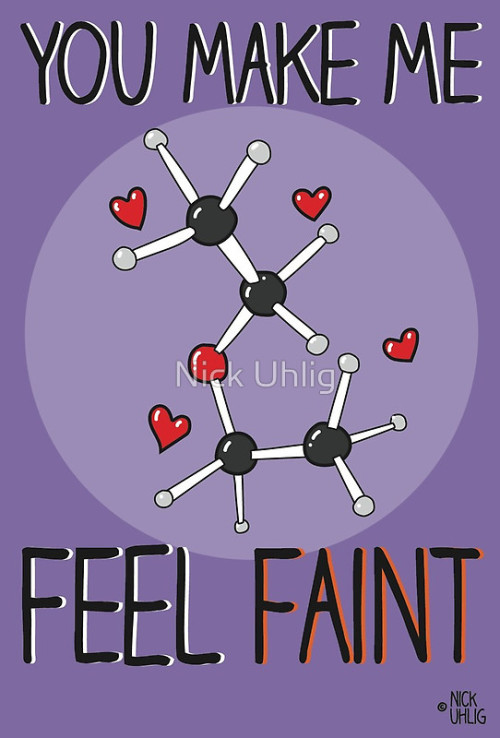205 posts
Latest Posts by ourvioletdeath - Page 3

It’s officially #Mermay!! 🧜♀️✨
In a horrible twist of fate, you and your worst enemy are soulmates. Tell the story of how you two reluctantly fall in love.
After the missile struck their moon at an appreciable percentage of the speed of light, scientists manage to translate the message that followed its arrival; “That was a warning. We did not miss. The next one will be wrapped in Cobalt. Do not threaten us.”
Mysterious DNA modification seen in stress response
With advances in genomics, scientists are discovering additional components of the DNA alphabet in animals. Do these unusual chemical modifications of DNA have a special meaning, or are they just signs that cellular machines are making mistakes?

Geneticists at Emory University School of Medicine led by Peng Jin, PhD have been studying a modification of DNA that is not well understood in animals: methylation of the DNA letter A (adenine). They’ve found that it appears more in the brain under conditions of stress, and may have a role in neuropsychiatric disorders.
The results were published on Oct. 24 in Nature Communications.
Methylation on the DNA letter C (cytosine) generally shuts genes off and is an important part of epigenetic regulation, a way for cells to change how the DNA code is read without altering the DNA letters themselves. Methylation describes a mark consisting of an extra carbon atom and three hydrogens: -CH3.
What if methylation appears on adenine? In bacteria, N6-methyladenine is part of how they defend themselves against invasion by phages (viruses that infect bacteria). The same modification was recently identified as present in the DNA of insects and mammals, but this epigenetic flourish has been awaiting a full explanation of its function.
Just to start, having that extra -CH3 jutting out of the DNA could get in the way of proteins that bind DNA and direct gene activity. For C-methylation, scientists know a lot about the enzymes that grab it, add it or erase it. For A-methylation, less is known.
“We found that 6-methyl A is dynamic, which could suggest a functional role,” Jin says. “That said, the enzymes that recognize, add and erase this type of DNA methylation are still mysterious.”
It does appear that the enzymes that add methyl groups to A when it is part of RNA are not involved, he adds.
First author Bing Yao, PhD, assistant professor of human genetics, recently established his own laboratory at Emory to examine these and other emerging parts of the DNA alphabet. Jin is vice chair of research in the Department of Human Genetics.
In the Nature Communications paper, Yao, Jin and their colleagues looked at the prefrontal cortex region of the brain in mice that were subjected to stress, in standard models for the study of depression (forced swim test and tail suspension test).
Under these conditions, the abundance of N6-methyladenine in the brain cells’ DNA rose four-fold, the scientists found. The DNA modification was detected with two sensitive techniques: liquid chromatography/mass spectrometry and binding to an antibody against N6-methyladenine. The peak abundance is about 25 parts per million, which isn’t that high - but it appears to be confined to certain regions of the genome.
The methyl-A modification tended to appear more in regions that were between genes and was mostly excluded from the parts of the genome that encode proteins. The loss of methyl-A correlates with genes that are upregulated with stress, suggesting that something removes it around active genes. There does seem to be some “cross talk” between A and C methylation, Jin adds.
Genes bearing stress-induced 6mA changes overlapped with those associated with neuropsychiatric disorders; a relationship that needs more investigation. The scientists speculate that aberrant 6mA in response to stress could contribute to neuropsychiatric diseases by ectopically recruiting DNA binding proteins.
The Ancient Dragon had awoken, looked over the terrified villagers… and immediately started gushing about how cute they were.

Roo protecting hER SON from a unicorn
INPRNT to buy prints
You have the power to heal others. You are a villain.

Failed Prank
last night my father said “good night mario” because i had been driving him around today and apparently going too fast, like the car racer mario andretti
but i didn’t know what he was talking about so i just sleepily replied “good night luigi”
Snakes are so cute though!
Itsy Bitsy Spider: Fear of spiders and snakes is deeply embedded in us
Snakes and spiders evoke fear and disgust in many people. Even in developed countries lots of people are frightened of these animals although hardly anybody comes into contact with them. Until now, there has been debate about whether this aversion is innate or learnt. Scientists at the Max Planck Institute for Human Cognitive and Brain Sciences (MPI CBS) in Leipzig and the Uppsala University have recently discovered that it is hereditary: Babies as young as six months old feel stressed when seeing these creatures—long before they could have learnt this reaction.

Presumably, in Germany most people have never come across a poisonous spider or snake in the wild. Here in this country there are no spiders that pose a threat to humans. Likewise for snakes there are just two species that are indeed poisonous but they are so rare that you hardly ever encounter them. Nevertheless, there are few people that would not shiver at the thought of a spider crawling up their arm, however harmless it may be.
This fear can even develop into anxiety which limits a person’s daily life. Such people are always on edge and cannot enter a room before it is declared “spider free” or cannot venture out into nature for sheer fear that they may encounter a snake. In developed countries one to five per cent of the population are affected by a real phobia of these creatures.
Until now, it was not clear where this widespread aversion or anxiety stems from. While some scientists assume that we learn this fear from our surroundings when we are a child, others suppose that it is innate. The drawback of most previous studies on this topic was that they were conducted with adults or older children—making it hard to distinguish which behaviour was learnt and which was inborn. Such studies with children only tested whether they spot spiders and snakes faster than harmless animals or objects, not whether they show a direct physiological fear reaction.
Scientists at the Max Planck Institute for Human Cognitive and Brain Sciences (MPI CBS) in Leipzig and the Uppsala University, Sweden, recently made a crucial observation: Even in infants a stress reaction is evoked when they see a spider or a snake. And this already at the age of six months, when they are still very immobile and have had little opportunity to learn that these animals can be dangerous.
“When we showed pictures of a snake or a spider to the babies instead of a flower or a fish of the same size and colour, they reacted with significantly bigger pupils”, says Stefanie Hoehl, lead investigator of the underlying study and neuroscientist at MPI CBS and the University of Vienna. “In constant light conditions this change in size of the pupils is an important signal for the activation of the noradrenergic system in the brain, which is responsible for stress reactions. Accordingly, even the youngest babies seem to be stressed by these groups of animals.”
“We conclude that fear of snakes and spiders is of evolutionary origin. Similar to primates, mechanisms in our brains enable us to identify objects as ‘spider’ or 'snake’ and to react to them very fast. This obviously inherited stress reaction in turn predisposes us to learn these animals as dangerous or disgusting. When this accompanies further factors it can develop into a real fear or even phobia. "A strong panicky aversion exhibited by the parents or a genetic predisposition for a hyperactive amygdala, which is important for estimating hazards, can mean that increased attention towards these creatures becomes an anxiety disorder.”
Interestingly, it is known from other studies that babies do not associate pictures of rhinos, bears or other theoretically dangerous animals with fear. “We assume that the reason for this particular reaction upon seeing spiders and snakes is due to the coexistence of these potentially dangerous animals with humans and their ancestors for more than 40 to 60 million years—and therefore much longer than with today’s dangerous mammals. The reaction which is induced by animal groups feared from birth could have been embedded in the brain for an evolutionarily long time.
For modern risks such as knives, syringes or sockets, presumably the same is true. From an evolutionary perspective they have only existed for a short time, and there has been no time to establish reaction mechanisms in the brain from birth. "Parents know just how difficult it is to teach their children about everyday risks such as not poking their fingers into a socket”, Hoehl adds with a smile.
While putting your favorite condiment on a sandwich, you accidentally make a magical occult symbol and summon a demon.

gnargh
Your grandmother bequeaths a statue of an angel to you in her will. You find it creepy, but not having the heart to sell it, you store it in the basement. The next morning, to your horror, the basement door is wide open, and there is a note lying where you left the statue. Picking it up, you barely make out the scrawled words. “Find me before I find you.”
Fascinating!

(Image caption: The normal mature dog spinal cord (A) has many axons surrounded by thick myelin sheaths (blue). In contrast, in the recovered 13-year-old dog with the genetic abnormality (B), there are many axons with thin myelin sheaths, identical to that seen in remyelination)
A little myelin goes a long way to restore nervous system function
In the central nervous system of humans and all other mammals, a vital insulating sheath composed of lipids and proteins around nerve fibers helps speed the electrical signals or nerve impulses that direct our bodies to walk, talk, breathe, swallow or perform any routine physical act.
But diseases of the nervous system, including multiple sclerosis (MS) in people, degrade this essential insulation known as myelin, disrupting the flow of information between the brain and the body, impairing movement, dimming vision and blunting the ability to function normally.
And while scientists have long studied myelin and understand its role in disease when it degrades, they have puzzled over how myelin repairs itself naturally and whether the thinned sheaths that are a hallmark of the healing nervous system are adequate for restoring the brain’s circuitry over the long haul.
In a study published in the Proceedings of the National Academy of Sciences, a team of researchers from the University of Wisconsin–Madison reports that in long-lived animals, renewed but thin myelin sheaths are enough to restore the impaired nervous system and can do so for years after the onset of disease.
The team’s findings reinforce the idea that thin myelin sheaths are a valid, persistent marker of remyelination, a hypothesis challenged by other recent research. “As the only biomarker of myelin repair available this would leave us without any means of identifying or quantifying myelin repair,” explains Ian Duncan, an expert on demyelinating diseases at the UW–Madison School of Veterinary Medicine and the senior author of the new study.
Duncan and his team looked at a unique genetic disorder that naturally afflicts Weimaraners, a breed of dog that as 12- to 14-day-old pups develop a severe tremor and loss of coordination. The condition is known to occur as the development of the myelin sheath in parts of the dog’s central nervous system is delayed. The symptoms gradually diminish and in most cases disappear altogether by 3-4 months of age.
“This is a very widespread mutation in the breed,” says Duncan, noting that myelin repair mimicking what is seen in remyelination is known to occur in these dogs as the rejuvenated nerve fibers have a thinned myelin sheath.
The new Wisconsin study was made possible as 13 years ago two Weimaraner pups, littermates, were seen as patients at the School of Veterinary Medicine and Duncan was able to maintain contact with the owners after the dogs were adopted and retrieve samples of spinal tissue after the dogs lived out their lives. As they aged, the dogs exhibited few signs of tremor and were deemed ‘neurologically normal’ up to 13 years of age.
The purpose of the study, says Duncan, was to confirm that thin myelin sheaths persisted and supported normal neurologic function.
To expand on the results, Duncan also looked at a condition in cats, another long-lived species that has been shown to fully recover nervous system function after demyelination. In particular, Duncan’s team was interested in remyelination of the optic nerves.
That element of the study, looking at remyelination two years after the onset of the condition, Duncan notes, is an example of “true demyelination and remyelination. We found that nearly every optic nerve fiber was remyelinated with a thin myelin sheath, which is important for understanding human disease because in multiple sclerosis, the optic nerve is often the first to be demyelinated.”
The new findings confirm that the gold standard for evaluating remyelination is the long-term persistence of thin myelin sheaths, which support nerve fiber function and survival, Duncan notes. The results are important for diseases like MS as it means that new therapies designed to promote myelin repair can be safely evaluated and quantified based on the presence of thin myelin sheaths.










the sketch of this was super old but I finished coloring it for WLF for 413 ohoh
it’s up as print!
trying to get your story together like:

Temples are built for gods. Knowing this a farmer builds a small temple to see what kind of god turns up.





Underneath the Sky
Studio Ghibli
(Howl’s Moving Castle, My Neighbor Totoro, Spirited Away, Kiki’s Delivery Service, A Whisper in the Heart)
this is how my voice sounds in my head
![[Wondermark] This Is The Coolest Thing.](https://64.media.tumblr.com/dcc8c5c3fcd80758b0c8f56258a6276e/tumblr_nsq31fItlh1s8opobo1_500.png)
![[Wondermark] This Is The Coolest Thing.](https://64.media.tumblr.com/cf9df4515ef78fa875685cc46df757ae/tumblr_nsq31fItlh1s8opobo2_500.png)
![[Wondermark] This Is The Coolest Thing.](https://64.media.tumblr.com/8dfe45b33e877a8e0b418f4b1ba0084d/tumblr_nsq31fItlh1s8opobo3_500.png)
[Wondermark] this is the coolest thing.

Diving across a hospital room to stop my patient’s hand from pulling their ET tube.
The reason aliens have not invaded Earth is due to our television transmission. Since they have no concept of televised entertainment, they view everything seen as fact.
I love that you don't correct people thinking you are gay. Like you just roll with it. Or are you gay?
I have been straight for the last 22 years. But you know, there’s always tomorrow, amigo
You are an immortal being, currently working as a professor of history. Every student loves your lectures because of your vivid and lifelike narrative of historic events.







How Calicos Give Birth. Based on a dream my girlfriend had.
more comics / doodle requests!
twitter / facebook
murder-look intensifies with every step







Chemistry Valentine’s Cards by Nick Uhlig.




Onward, steed!